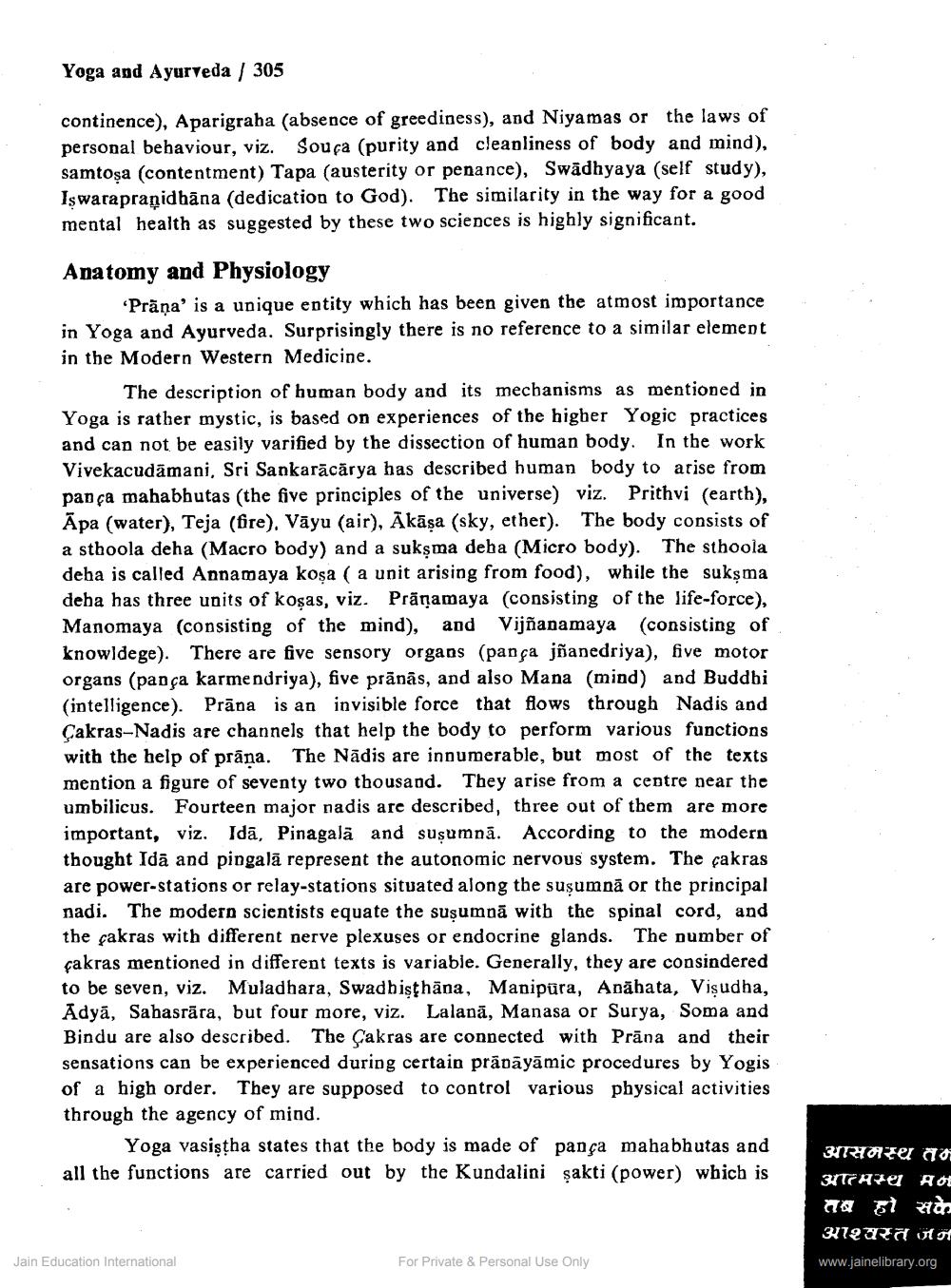Book Title: Yoga and Ayurveda Author(s): R V Ranade Publisher: Z_Umravkunvarji_Diksha_Swarna_Jayanti_Smruti_Granth_012035.pdf View full book textPage 4
________________ Yoga and Ayurveda / 305 continence), Aparigraha (absence of greediness), and Niyamas or the laws of personal behaviour, viz. Souça (purity and cleanliness of body and mind), samtoşa (contentment) Tapa (austerity or penance), Swadhyaya (self study), Iswarapraạidhāna (dedication to God). The similarity in the way for a good mental health as suggested by these two sciences is highly significant. Anatomy and Physiology Prāna' is a unique entity which has been given the atmost importance in Yoga and Ayurveda. Surprisingly there is no reference to a similar element in the Modern Western Medicine. The description of human body and its mechanisms as mentioned in Yoga is rather mystic, is based on experiences of the higher Yogic practices and can not be easily varified by the dissection of human body. In the work Vivekacudāmani, Sri Sankarācārya has described human body to arise from pança mahabhutas (the five principles of the universe) viz. Prithvi (earth), Āpa (water), Teja (fire). Vāyu (air), Ākāşa (sky, ether). The body consists of a sthoola deha (Macro body) and a sukṣma deha (Micro body). The sthoola deha is called Annamaya koşa ( a unit arising from food), while the sukşma deba has three units of koşas, viz. Prānamaya (consisting of the life-force), Manomaya (consisting of the mind), and Vijñanamaya (consisting of knowldege). There are five sensory organs (pança jñanedriya), five motor organs (pança karmendriya), five prānās, and also Mana (mind) and Buddhi (intelligence). Prāna is an invisible force that flows through Nadis and Çakras-Nadis are channels that help the body to perform various functions with the help of prāna. The Nādis are innumerable, but most of the texts mention a figure of seventy two thousand. They arise from a centre near the umbilicus. Fourteen major nadis are described, three out of them are more important, viz. Idā, Pinagalā and suşumnā. According to the modern thought Idā and pingalā represent the autonomic nervous system. The çakras are power-stations or relay-stations situated along the suşumnā or the principal nadi. The modern scientists equate the suşumnā with the spinal cord, and the çakras with different nerve plexuses or endocrine glands. The number of çakras mentioned in different texts is variable. Generally, they are consindered to be seven, viz. Muladhara, Swadhisthāna, Manipura, Anähata, Vişudha, Adya, Sahasrāra, but four more, viz. Lalanā, Manasa or Surya, Soma and Bindu are also described. The Cakras are connected with Prāna and their sensations can be experienced during certain prāvāyāmic procedures by Yogis of a high order. They are supposed to control various physical activities through the agency of mind. Yoga vasiştha states that the body is made of pança mahabhutas and all the functions are carried out by the Kundalini şakti (power) which is आसमस्थ तन TAPE AO तब हो सके HRA for www.jainelibrary.org Jain Education International For Private & Personal Use OnlyPage Navigation
1 2 3 4 5 6 7 8
